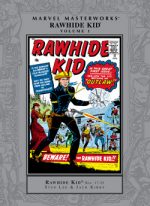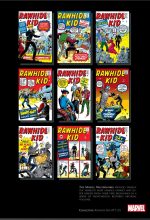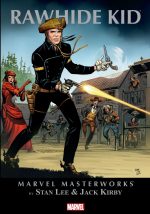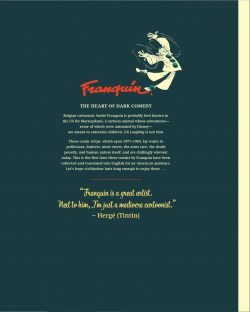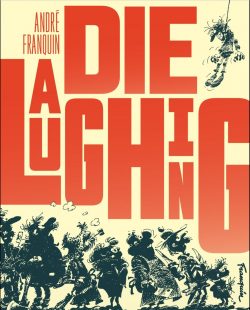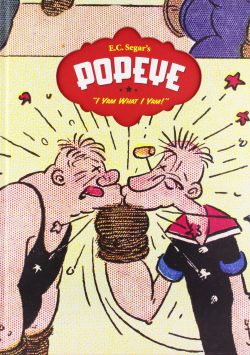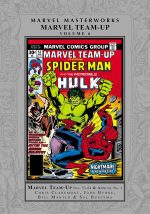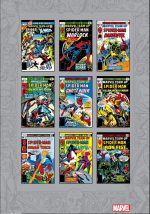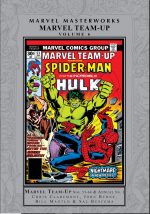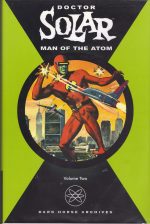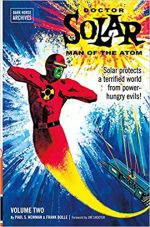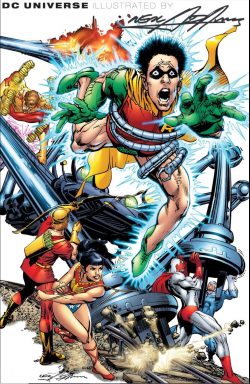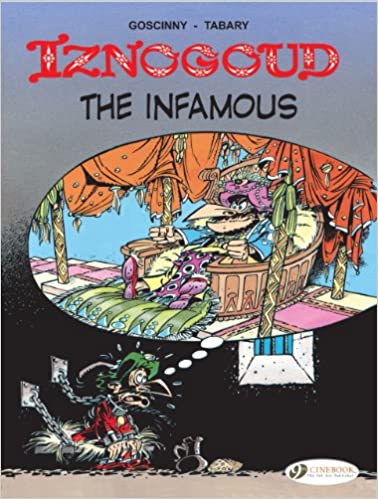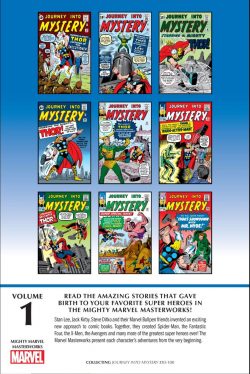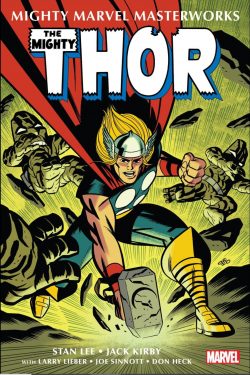
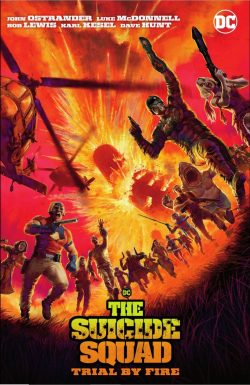
By John Ostrander, Luke McDonnell, Bob Lewis, Karl Kesel, Dave Hunt & various (DC Comics)
ISBN: 978-1-4012-5831-3 (TPB)
Following the huge success of Crisis on Infinite Earths, fickle fan-interest was concentrated on DC, and many of their major properties – and indeed the entire continuity – were opened up for radical change, innovation and renewal.
So, how best to follow the previous year’s cosmic catastrophe? Why not a much smaller and more personal Great Disaster, spotlighting those strangers in familiar costumes and a bunch of beginnings rather than the deaths and endings of the Crisis?
Thus, Darkseid of Apokolips attacked humanity’s spirit by destroying the very concept of heroism and individuality in Legends and sent hyper-charismatic Glorious Godfrey to America to lead a common man’s crusade against extraordinary heroes, while he initiated individual assaults to demoralize and destroy key champions of Earth.
The rampant civil unrest prompted President Ronald Reagan to outlaw costumed crime-busters and opened the door for a governmental black-bag operation to use super-powered operatives who had no option but to obey the orders of their betters…
That was the beguiling concept behind the creation – or more accurately consolidation and reactivation – of separate but associated concepts dating back to the 1960s and the first revival of superhero comics.
John Ostrander was new to DC; lured with editor Mike Gold from Chicago’s First Comics where their work on Starslayer, Munden’s Bar and especially Grimjack had made the independent minnows some of the most popular series of the decade. Spinning out of Legends, Ostrander hit the ground running with a superb and compelling reinterpretation of the long neglected Suicide Squad: a boldly controversial revaluation of meta-humanity and the hidden role of government in a world far more dangerous than the placid public believed…
Devised by Robert Kanigher, The War that Time Forgot debuted in Star Spangled War Stories #90 (April-May 1960) and ran until #137 (May 1968). The wonderment began as paratroops and tanks of “Question Mark Patrol†were dropped on Mystery Island from whence no American soldiers ever returned. The crack warriors discovered why when the operation was overrun by Pterosaurs, Tyrannosaurs and worse: all superbly rendered by veteran art team Ross Andru & Mike Esposito.
What followed was years of astonishing action as various military disciplines – of assorted nationalities – pitted modern weapons and human guts against the most terrifying monsters ever to stalk the Earth…
The Brave and the Bold #25 (September 1959) was the first issue of the title in its new format as a try-out vehicle testing new characters and concepts before launching them into their own series. Inauspiciously, the premier starred a quartet of human specialists – Colonel Rick Flag, medic Karin Grace and big-brained boffins Hugh Evans and Jess Price – officially convened by the US government into a Suicide Squad codenamed Task Force X to investigate uncanny mysteries and tackle unnatural threats.
The gung-ho gang – another Kanigher, Andru & Esposito invention – appeared in six issues but never really caught the public’s attention – perhaps because they weren’t costumed heroes – and quickly faded from memory.
In April 1967, Our Fighting Forces #106 began running the exploits of homicide detective Ben Hunter who was recruited by the army during WWII to run roughshod over a penal battalion of prisoners who had grievously broken regulations.
Facing imprisonment or execution, the individually lethal military malcontents were given a chance to earn a pardon by undertaking missions deemed too tough or hopeless for proper soldiers. Hunter’s Hellcats – inarguably “inspired†by the movie The Dirty Dozen – ran until OFF #122 (December 1969) on increasingly nasty and occasionally fatal little sorties, before being replaced without fanfare or preamble by The Losers and similarly lost to posterity.
This reissued trade paperback/digital collection (spanning May to December 1987) gathers the in-filling, background-providing revised backstory from Secret Origins #14 and the first 8 issues of the decidedly devious thriller serial set in the darkest corners of the-then DCU. It opens sans fanfare in the Oval Office as strident political insider Amanda Wallerbriefs the President on ‘The Secret Origin of the Suicide Squad’ (by Ostrander, Luke McDonnell & Dave Hunt).
Smartly amalgamating the aforementioned Hellcats and Colonel Flag through early missions against those dinosaurs, Ostrander neatly tied together strands and linked obscure periods of recent events to provide a shocking secret history of America: a time when superheroes were forced into retirement after World War II, with the US military and Task Force X used to unobtrusively take out those monsters, spies, aliens and super-criminals who didn’t conveniently pack up with them…
Waller has a plan: she doesn’t want society to depend on the current crop of capricious super do-gooders and has recruited Flag’s damaged and driven son to run a new penal battalion comprising captured super-villains who will work off the books for the highest echelons of government, using metahuman force for the greater – i.e. political – good…
The true reasons and motivations for her actions are then disclosed in a tragic story of personal loss and criminal atrocity before she is grudgingly given the go-ahead, but told that if the new initiative fails or becomes public knowledge, she alone will bear the blame…
The series proper – by Ostrander and McDonnell – begins with ‘Trial by Blood’ (inked by Karl Kesel) as metahuman terrorist team The Jihad – working out of rogue state Qurac – bloodily prepare to bring slaughter to America. Tipped off by an asset inside the killer sect, the US wants to stop the killers before they start. This means sending Waller’s convict team to kill off the Jihad before they even leave their impregnable mountain fortress.
Knowing criminals cannot be trusted, the set-up involves not just bribery – reduced sentence deals, favours and pardons – but also minor coercion. Combat operations are led by traumatised, obsessively patriotic Rick Flag Jr. – assisted by amnesiac martial arts master Bronze Tiger. To keep everybody honest and on-mission, convict-operatives Deadshot, Plastique, Mindboggler, Captain Boomerang and schizophrenic sorceress Enchantress are wired with remote-detonation explosive devices…
Backed by a support team which includes Flag’s ex-girlfriend Karin Grace and Briscoe, an oddball mystery pilot enjoying a rather unusual relationship with his seemingly sentient helicopter gunship, the squad seem ready for anything. However, even before they set off for Qurac, things go badly wrong after Boomerang and Mindboggler clash and the Australian promises bloody vengeance…
Linking up with undercover asset Nightshade, even more misfortune manifests as the teleporting covert op violently complains to Flag about the horrific things she has had to do since infiltrating Jihad. Challenged but committed now, the unwilling agents begin their assignments in assassination but the ‘Trial by Fire’ unravels when one of the Squad switches sides…
Thankfully, the US has another agent in play and undercover, so the damage is limited. Nevertheless, not every American makes it home…
Issue #3 finds defeated and deflated New God Glorious Godfrey incarcerated in Belle Reve: a superhuman detention centre and top secret base of the Suicide Squad, whilst a universe away his master Darkseid despatches Female Furies Lashina, Stompa, Bernadeth and Mad Harriet to fetch him home.
Tensions pop Earth-side when Flag strenuously objects to mind-wiping procedures being used on one of his “recruitsâ€, and Waller takes flak from Nightshade and super-disguise expert Nemesis over her handling of the Qurac mission… even getting grief from mouthy felon Digger Harkness.
The erstwhile Captain Boomerang was promised a measure of leniency and even a place outside the walls if he behaved, and thinks it’s time he got his reward. All arguments end however when the unstoppable Furies bust in to administer Darkseid’s judgement in ‘Jailbreak’…
Despite their best efforts the mere mortals are swept aside and only the renewal of an internecine struggle for command of the Furies prevents greater harm to the criminal crew…
As Bob Smith takes over inking these tense yarns, domestic issues take precedence when a new masked hero begins cleaning up the streets of Central City. Waller is painfully aware that the increasingly popular vigilante is turning minority criminals over to the cops, but letting white perps slide if they promise to join burgeoning political party the Aryan Empire…
With undercover specialists Black Orchid and Nemesis taking the lead and obnoxious racist Harkness acting as thoroughly credible decoy, the team – supplemented by Time Thief Chronos – lay a trap for a white supremacist billionaire to end ‘William Hell’s Overture’…
A disastrous dip into Cold War realpolitik then begins when Waller is ordered to send a team into a Soviet gulag to rescue a dissident novelist in ‘The Flight of the Firebird’.
Tapping criminal strategist The Penguin to plan the complex mission, neither she, her superiors nor indeed anyone seems aware that the Russians actually want to banish gadfly Zoya Trigorin to the West, but she wants to stay a martyr in the Novogorod “psychiatric centreâ€â€¦
More importantly, the foredoomed scheme depends on Enchantress, who now exhibits all the more bloodthirsty symptoms of being crazier than a bag-full of rabid badgers…
Before they head off, Flag checks in on Harkness (who has earned his own place in New Orleans), blithely unaware that the unrepentant rogue is already planning to supplement his civil service stipend by returning to his old felonious ways…
The mission begins and the Squad slowly infiltrates the frozen town of Gorki and breaks into Novogorod, but when Trigorin refuses to leave they are forced to kidnap her and make a desperate escape across Russia in ‘Hitting the Fan’.
The botched job leads American authorities to disavow all knowledge of their efforts, but the real problem is still the killing cold, vast distance and murderously determined efforts of Soviet super-team The People’s Heroes, who relentlessly hunt the survivors who have been ‘Thrown to the Wolves’ by their own bosses…
This glimpse at the grubby underside of super-heroics concludes with a smart yet incisive perusal of project psychologist Simon La Grieve‘s ‘Personal Files’: offering insights and setting up future subplots for Waller, Flag, Deadshot Floyd Lawton, Boomerang and temporarily curtailed, mystically-bound Enchantress as well as her helpless human host June Moon…
These were and remain a magnificent mission statement for the DC Universe, offering gritty, witty, cohesive and contemporary stories that appealed not just to Fights ‘n’ Tights fanatics but also lovers of espionage and crime capers. This collection is perfect fun-fodder for today’s so-sophisticated, informed and thrill-seeking readers.
© 1987, 2021 DC Comics. All Rights Reserved. Original compilation © 2011, DC Comics. All Rights Reserved.

